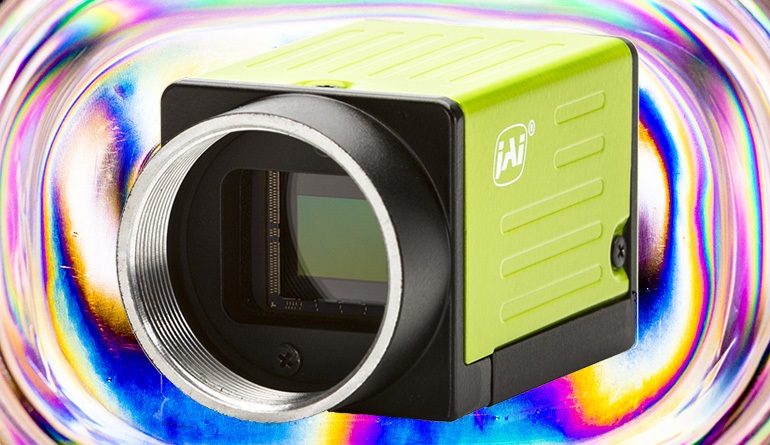COPENHAGEN – 04 July, 2019 – JAI has launched a second version of its Go Series 5-megapixel polarization camera. The new GO-5100MP-PGE is equipped with a standard GigE Vision interface and, just like JAI’s original GO-5100MP-USB with a USB3 Vision interface, the new camera is built around Sony’s IMX250MZR polarized CMOS image sensor.
The polarization capabilities are derived from the sensor’s unique 4-way polarized filter array, which consists of four separate polarizing filters – angled at 0°, 45°, 90°, and 135° - that have been arranged in a regular pattern across the sensor. Thus, each block of four pixels can be used as a calculation block to determine the angle and intensity of light reflecting from objects, as well as several other calculations.
The use of polarization filters can not only mitigate reflections and hot spots, particularly when inspecting plastics, glass, and other shiny materials, but can also enable analysis of material thickness, stress points, and other potential defects not detectable using standard machine vision techniques. The GO-5100MP-PGE has a full resolution of 2464 x 2056 pixels, though the 4-way polarization design of the sensor reduces the effective resolution of the output to approximately 1.25 megapixels. The camera delivers 8-bit full resolution output at 22.7 frames per second, with 10-bit and 12-bit output also supported. Pixel size is 3.45 µm x 3.45 µm for a 2/3” optical format.
In addition to being able to provide raw polarization output for all pixels, the camera includes a built-in function for pre-calculating AoLP (angle of linear polarization) – the angle of polarized light striking each 4-pixel block – and DoLP (degree of linear polarization) – which represents the strength of the polarized component relative to the total light falling on the block. By performing these initial calculations in the camera, host resources can be freed up to concentrate on other aspects of the application.
Other camera features include an ROI function, shading compensation, and gamma correction. The main camera body is a compact 29 x 29 x 41.5 mm, with a lens mount supporting standard C-mount lenses. Like other Go Series cameras, it is built to high standards for shock (80G) and vibration (10G) to enable it to perform in industrial environments with an MTBF rating of more than 150,000 hours.
About JAI
JAI is a manufacturer of high quality, industrial-grade cameras for the machine vision, transportation, food & beverage, aerospace, medical and scientific markets.
JAI’s broad product line features high performance progressive scan CCD and CMOS cameras with spatial resolutions from VGA to 20 megapixels. It also includes a range of innovative multi-sensor prism-block cameras including both area scan and line scan models.
Physical interfaces include the Camera Link ® , GigE Vision ® , CoaXPress, and USB3 Vision high performance digital standards, as well as both TV-standard and analog progressive scan output. JAI cameras help improve customer businesses in a variety of ways, whether by improving quality and accuracy, lowering costs, increasing yields, or simply enabling better service. In addition to cameras, JAI’s traffic solutions group is one of the world’s leading manufacturers of specialized traffic systems. Solutions are based on JAI-developed hardware and software, which is often integrated with third-party products.













